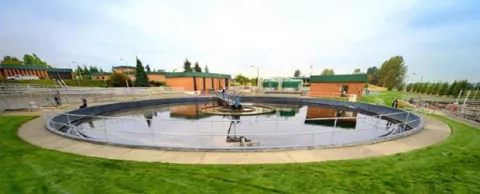
If you are not already struggling with a water crisis, you soon will be. Water supplies are already stretched, but they are being stretched among ever greater numbers of people.
Old infrastructure is a big part of the problem. It’s tempting to cut maintenance to save money, but those postponed repairs have resulted in massive leaks that can claim a third or more of a city’s water. And as you’ll read below, it gets worse. Lead poisoning. Bacterial contamination. Untreated hospital waste. These are all becoming serious problems. They shouldn’t be.
As we describe below, there are solutions. Sure, they cost money. But if you continue to postpone working on the problem, the cost — both financial and to your citizens’ health — will only grow. — Jesse Berst
In the industry, they call it non-revenue water (NRW). It's primarily the water delivered through pipelines that flows through leaks and never reaches its destination or that is not billed for. The World Bank says water utilities lose between 25-30% of the water they put in the distribution system every day, at a cost of about $14 billion a year.
Water distribution and wastewater treatment systems in many cities are no longer reliable and need to be replaced, according to the American Water Works Association (AWWA). The organization warns that failure to replace water networks will greatly increase the risk of poisoning and illness from a combination of metals (like lead) and other forms of bacterial and other contamination. Water contamination from hospital waste also is a growing concern.
The AWWA is adamant that water system upgrades need to happen now. The organization says cities in the U.S. alone should plan on spending more than $1 trillion over the next two decades on pipes and related equipment. As the AWWA pointed out in an article in Ensia, the sheer size of the investment is scary -- but delaying upgrades could be even more expensive considering the damage leaking pipes can do to buildings and roads.
AWWA also strongly urges communities and water utilities to be strategic in their approach. As AWWA legislative director Tommy Holmes said in the article, "We preach asset management. Don't replace x percent of pipes a year. Do an analysis of your system and choose which 2 percent of pipes need to be replaced, rather than just focusing on a geographical area. You want to replace pipes on the verge of failure first."
Tools you can use
There are a number of tools and solutions communities and utilities can use to assess their repair or replace priorities for their water systems. Council Associate Partner CH2M has been helping cities and communities with water system solutions for years -- from helping with design to technology options and overall system management. Ken Thompson, deputy director of intelligent water solutions for the company, points to advanced metering infrastructure (AMI) as one tool to be considered. Unlike older water meters, the smarter meters can do far more than measure water flow such as zero in on leaks by detecting abnormal levels of water use and transmitting the information back to the central office wirelessly. Because of that capability, water utilities can spot leaks and fix them before they cause damage.
Sensors are another tool. Thompson said CH2M uses sensors that can detect changes in the normal chemical profile for drinking water -- which alerts the utility to test it. Thompson said the sensors aren't cheap at about $2,000 apiece, but noted that even a large city could do well with 10-20 sensors and a very small community would need one or two.
In addition to the solutions from companies such as CH2M, Council Lead Partners Microsoft and IBM offer software and assistance (Microsoft's CityNext and IBM's Smarter Cities) intended to help cities determine their best upgrade approach and perform data analysis from meters and sensors.
Related articles…
Does your city need better quality water? Here's one (and maybe cheaper) way to do it
Water utilities: Dump your old business model (because you need a new one now)
Drought and growth prompt more cities to quench thirst with salt water
Doug Peeples is a Portland, Oregon-based writer specializing in technology and energy. Follow @smartccouncil on Twitter.



